This article was co-authored by Tara Coleman. Tara Coleman is a Clinical Nutritionist who has a private practice in San Diego, California. With over 15 years of experience, Tara specializes in sports nutrition, body confidence, and immune system health and offers personalized nutrition, corporate wellness, and online learning courses. She received a BS in Biology from James Madison University and spent six years in the pharmaceutical industry as an analytical chemist before founding her practice. Tara has been featured on NBC, CBS, Fox, ESPN, and Dr. Oz The Good Life as well as in Forbes, Cosmopolitan, Self, and Runner’s World.
There are 34 references cited in this article, which can be found at the bottom of the page.
wikiHow marks an article as reader-approved once it receives enough positive feedback. In this case, 100% of readers who voted found the article helpful, earning it our reader-approved status.
This article has been viewed 107,196 times.
It's possible to suffer from both gout and diabetes at the same time. People with both gout and diabetes are advised to avoid foods that may affect the levels of uric acid and insulin in the body. Therefore, recommended diets for this group focus on lowering both uric acid and blood sugar levels.
Steps
Eating Right
-
1Avoid purine-rich foods. Since uric acid is produced from the metabolism of purine in the body, it is best to avoid foods that contain purine. Urate crystals accumulate in the joints if uric acid is elevated and this can aggravate joint pain in gout.
- Also, uric acid elevation can increase insulin resistance which is a condition wherein the body do not respond to the function of insulin[1] . This can further elevate the blood sugar levels of a person, leading to diabetic symptoms.
- Purine-rich foods are mackerel, anchovies, organ meats, dried beans, peas, canned goods, instant noodles, wine and beer.
-
2Avoid foods rich in fructose. Foods rich in fructose consume a lot of adenosine triphosphate (or ATP) when metabolized. This ATP is an energy-supplying molecule that the cells in the body use. Over-consumption of ATP leads to its depletion and results in the generation of substances such as lactic acid and uric acid, thereby increasing the levels of uric acid in the blood.
- Also, fructose is considered a sugar. Consuming foods rich in fructose can elevate the blood sugar of a person and lead to occurrence of symptoms.
- Foods to avoid are apples, bananas, pears, agave, melons, asparagus, beans, broccoli, cabbage, onion, tomato, peanuts, raisins, figs, carbonated drinks, fruit drinks, ketchup, canned goods, chocolate, pastries and breakfast cereals.
Advertisement -
3Avoid alcohol. Alcohol interferes with the removal of uric acid from the body. When alcohol is converted to lactic acid, it reduces the amount of uric acid that is eliminated from the body through the kidneys. This is because the lactic acid competes with the uric acid in terms of being removed by the kidneys through urine.
- Increased levels of ethanol (alcohol) in the body increase the body's production of uric acid by increasing the amount of ATP (Adenosine triphosphate) that is converted to AMP (Adenosine monophosphate) - a precursor of uric acid[2] .
- Also, alcohol can affect the body’s sensitivity to insulin.
-
4Eat high-fiber foods. Dietary fiber absorbs uric acid in the bloodstream, allowing it to be eliminated from the body through the kidneys[5] . Also, pectin (which is a type of soluble fiber) lowers cholesterol by absorbing t from the body[6] .
- High levels of cholesterol in the body can increase the blood pressure and can lead to the occurrence of diabetic symptoms.
- Include at least one high-fiber food in each major meal or snacks such as pineapple, oats, isabgol, cucumbers, oranges, barley, carrots and celery. The ideal daily intake is 21 grams[8] .
-
5Eat foods rich in anthocyanins. Anthocyanins prevent the crystallization of uric acid and also prevent it from being deposited in the joints.[6] Also, anthocyanins encourage hypoglycemic activity that may help to lower blood sugar[10] .
- Foods rich in anthocyanins are eggplant, blueberries, cranberries, plums, black currant, grapes, pomegranates, red fleshed peaches and cherries.
- You should include at least one of these foods in each major meal or snack.
-
6Eat foods rich in omega-3 fats. Increasing your intake of omega-3 fatty acids can help reduce insulin resistance (a condition where the body is able to produce insulin but it is not used effectively), thereby reducing the risk or severity of type 2 diabetes[8] .
- Also, the eicosa pentanoic acid (EPA) in omega-3 fatty acids can reduce the levels of cholesterol and uric acid. The recommended dose for omega-3 fatty acids is not more than 3 grams daily[12] .
- Foods rich in omega-3 fatty acids are sardines, salmon, soybeans, flax seeds, walnuts, tofu, brussels sprouts, cauliflower, shrimp and winter squash.
Changing Your Eating Habits
-
1Eat six small meals per day. This should include three regular meals and three snacks in between meals. General dietary guidelines for diabetic persons include:
- Carbohydrates should provide 45 - 65% of total daily calories.
- Fats should provide 25 - 35% of daily calories.
- Protein should provide 12 - 20% of daily calories
-
2Calculate how much food from each food group you can eat. Basically, carbohydrates and protein each provide 4 calories per gram, while fat provides 9 calories in each gram.
- For example, if you have eaten 100 grams of fat in a meal, then the number of calories consumed is 900 (9 multiplied by 100). If you have eaten 100 grams of protein, then you have consumed 400 calories (4 multiplied by 100). If you have eaten 200 grams of carbohydrates, then you have consumed 800 calories (4 multiplied by 200).
- Once you know the number of calories from fat, carbohydrates and protein, add them up to get the total calories for that day. So 900 + 400 + 800 = 2100 calories. After this you can now determine the percentage of calories you have consumed.
- To do this, divide the number of calories from each nutrient by the total number of calories for that day and multiply it by 100. So, for fat: (900/2100) x 100 = 42.8 percent. For protein: (400/2100) x 100 = 19 percent. For carbohydrates: (800/2100) x 100 = 38 percent.
- Once you are aware of the general dietary guidelines for diabetic persons using this basic computation, you can easily tell if your diet falls in the normal range.
-
3Eat 45-60 grams of carbohydrate with each meal. In order to guide you, according to American Diabetes Association, there is about 15 grams of carbohydrate in:
- 200 ml of milk or orange juice
- 6 to 8 hard candies
- ¼ French fry
- 1 cup of soup
- 1 small piece of fruit (about 4 oz)
- 1 slice of bread
- ½ cup of oatmeal
- 1/3 cup of rice or pasta
- 4 to 6 crackers
- ½ hamburger bun
- 3 oz of baked potato
- 2 small cookies
- 2 inches (5.1 cm) of cake without frosting
- 6 chicken nuggets
- ½ cup of casserole
-
4Eat 0.8 grams of good-quality protein per kilogram of body weight each day. For example, if your weight is 64 kilograms, the recommended protein intake is 51.2 grams (0.8 multiplied by 64).
- Good-quality protein sources are defined as those that have PDCAAS (Protein Digestibility–Corrected Amino Acid Scoring Pattern) scores[10] . This is essentially a grading scale for protein, with 1 being the highest score and 0 being the lowest. Here is a breakdown of the common proteins and their PDCAAS score:
- 1.00 for casein, soy products, egg white, whey
- 0.9 for beef and soybeans
- 0.7 for black beans, chickpeas, fruits, vegetables and legumes
- 0.5 for cereals and peanuts
- 0.4 for whole wheat.
-
5Get 25 - 35% of your daily calories from fats. For diabetics, 1500 to 1800 total calories is the ideal daily intake. Fat provides 9 calories per gram.
- To compute for the daily recommended intake in grams: if the diabetic patient has a diet of 1500 calories per day for example, then multiply 1500 by 0.25 and .35 to get a range of 375 to 525, then divide each by 9. So 375/9 = 41.6, and 525/9 = 58.3.
- This gives you a range of 41.6 to 58.3 grams of fat per day[15] . For diabetics, healthy fats such as Omega-3 fatty acids are recommended.
-
6Avoid skipping meals. This can lead to hypoglycemia or low blood sugar levels because the body uses up the stored blood glucose in the body when it cannot get energy from food.
-
7Eat meals and snacks at the same time every day. This will help your body to develop a routine in terms of its consumption of glucose from foods. This helps to prevent the occurrence of either high blood glucose or low blood glucose levels.
Understanding Gout and Diabetes
-
1Understand what causes gout. Gout - a form of arthritis - is a condition caused by the buildup of excess uric acid. Uric acid is a chemical produced during purine metabolism in the body. Purines are nitrogen-containing compounds that are produced inside the body or can be found in certain foods and drinks.
- Gout occurs when urate crystals accumulate in the joints, causing intense pain and inflammation. Urate crystals can form when a person has high levels of uric acid in the blood.
- Gout causes sudden, extreme attacks of pain, redness and swelling. Gouty arthritis most often affects the big toe, but it also can occur in the ankles, feet, knees, wrists and hands.
-
2Know what causes diabetes. Diabetes is a disease that affects the body’s utilization of glucose – blood sugar that is the body’s source of energy. In order to use glucose, our body needs insulin. Insulin is a hormone that helps transport blood sugar or glucose into the cells as a source of energy.
- Without sufficient insulin, the blood sugar cannot be absorbed by the body's cells and remains in the bloodstream. In people with diabetes, there is the inability of the body to produce insulin or the insulin does not work like it should. Diabetes has two types:
- Type 1 diabetes. The body’s immune system attacks and destroys the beta cells of the pancreas, which is responsible for the production of insulin.
- Type 2 diabetes. The pancreas can still produce insulin but the body does not respond well to it, so the insulin doesn't work.
- In both types of diabetes, the glucose cannot normally enter the cells and remains in the bloodstream, resulting in high levels of blood sugar.
-
3Know the risk factors for both gout and diabetes. Gout and type 2 diabetes often occur together, as both diseases have common risk factors. These include:
- Non-modifiable Factors:
- Age: As the body ages, its functions deteriorate. It may be unable to excrete uric acid any more which can lead to gout, or it may be unable to utilize insulin anymore, which can lead to diabetes.
- Family history: Both gout and diabetes can be inherited. If one of your family members has gout or diabetes, then there is a chance that you may inherit the disease as well.
- Gender:. Both gout and diabetes more often occur in men than women. This is because men have higher uric acid levels and are less sensitive to insulin[16] .
- Modifiable Factors:
- Obesity: More adipose tissues from fats can produce and secrete more uric acid which can cause gout[17] . Also, insulin does not easily bind to fats, which can increase a person’s risk of diabetes.
- Diet and lifestyle: Excessive intake of alcohol can affect the body’s normal process of excreting uric acid, which can lead to gout. Also, alcohol can affect the body’s sensitivity to insulin[18] which can lead to diabetes.
- Non-modifiable Factors:
-
4Recognize the symptoms of gout. They include:
- Joint pain and inflammation: This is caused by elevated deposits of crystallized uric acid in the joints. This uric acid may irritate the joints and lead to inflammation. The pain in the joint can be described as sharp or excruciating.
- Kidney problems: Increased uric acid can cause kidney stone formation, which leads to problems with urination. The kidney stones may block urine passage.
-
5Familiarize yourself with the symptoms of hypoglycemia. Diabetes symptoms occur when the blood sugar is below the normal range (hypoglycemia) or above the normal range (hyperglycemia). The normal range of blood sugar level in the body is 70 to 110 mg/dl. Signs and symptoms of hypoglycemia include:
- Blurred or impaired vision: Due to low levels of glucose (which provides energy for the body) certain parts of the body, such as the eyes, become weak due to insufficient energy.
- Confusion which may lead to delirium: Due to insufficient glucose, the vital organs such as the brain are not working properly.
- Extreme hunger leading to excessive eating: The body compensates for its lack of energy by releasing Ghrelin (hunger hormone) which gives the person the urge to eat[19] .
- Extreme thirst leading to excessive drinking: When the body loses fluids because of frequent urination in diabetes, the body secretes vasopressin (also known as anti-diuretic hormone) which activates the thirst mechanism and stimulates the kidneys to reabsorb water[20] . The person responds by drinking a lot of water in order to replace lost fluids.
- Rapid or fast heartbeat: Because the body has no source of energy such as glucose, the heart compensates by speeding up the pumping of blood to the body's vital organs.
- Weakness or fatigue: Because the body does not have enough glucose, the sufferer may experience weakness and fatigue.
-
6Recognize the signs and symptoms of hyperglycemia. When blood sugar levels go above the normal range, symptoms include:
- Blurred or impaired vision: Abnormally high glucose levels in the blood can lead to swelling of the lens, which causes blurred vision[21] .
- Confusion which may lead to delirium: In hyperglycemia, although there may be a high level of blood glucose, it is not transported into the cells because of lack of insulin or insulin does not respond well to the body, so there is still no source of energy. The vital organs such as the brain don't work properly due to insufficient energy.
- Extreme thirst leading to excessive drinking: When the body loses fluids because of frequent urination in diabetes, the body secretes vasopressin which functions to activate the thirst mechanism and stimulate the kidneys to reabsorb water[22] . The person responds by drinking a lot of water in order to replace lost fluids.
- Frequent urination: With hyperglycemia, not all of the blood sugar can be reabsorbed and some of the excess blood glucose is secreted in the urine where it draws more water[23] . The kidneys attempt to decrease blood glucose levels by excreting the excess blood glucose through the urine.
- Headaches: In an attempt to get rid of the excess sugar, the body increases urine output. This increase in urination leads to dehydration and electrolyte imbalance that results in headache[24] .
- Rapid or fast heartbeat: Because the body has no source of energy such as glucose, the heart compensates by speeding up the pumping of blood into the vital parts of the body.
- Weakness or fatigue: Insufficient energy - due to the inability of glucose to be absorbed by the cells - leads to weakness and fatigue.
References
- ↑ https://pubmed.ncbi.nlm.nih.gov/24769205/
- ↑ https://creakyjoints.org/about-arthritis/gout/gout-diet/alcohol-and-gout/
- ↑ Moghul, S., 2013, June 23
- ↑ Joslin Diabetes Center, n.d.
- ↑ Coleman, E., n.d.
- ↑ https://www.podiatryhotline.com/blog/5-tips-for-preventing-a-gout-flare-up
- ↑ Grace, M., Ribnicky, D., 2009, May
- ↑ https://www.mdpi.com/2072-6643/10/3/350
- ↑ University of Maryland Medical Center, n.d.
- ↑ https://pubmed.ncbi.nlm.nih.gov/10867064/
- ↑ acaloriecounter.com., n.d.
- ↑ NHS Choices, 2011, October 5
- ↑ Journal of Biological Chemistry, 2013, September 20
- ↑ Zilkens, R., Burke, V., n.d.
- ↑ Dopart, S., 2010, October 25
- ↑ Knott, L., 2013, January 11
- ↑ Steinmehl, E., 2010, August 25
- ↑ Knott, L., 2013, January 11
- ↑ Diabetes.co.uk, n.d.
- ↑ Sloane, n.d.
- http://www.mayoclinic.org/diseases-conditions/gout/basics/definition/con-20019400
- http://www.ncbi.nlm.nih.gov/pubmed/23913681
- http://care.diabetesjournals.org/content/26/3/608.full
- http://www.huffingtonpost.com/susan-b-dopart-ms-rd/controlling-your-hunger-h_b_763600.html
- http://www.patient.info/doctor/thirst
- http://www.diabetes.co.uk/symptoms/polyuria.html
- http://www.diabeticconnect.com/diabetes-information-articles/general/338-are-your-blood-sugar-levels-giving-you-headaches
- http://www.medscape.com/viewarticle/812194_7
- http://www.bupa.co.uk/individuals/health-information/health-news-index/2004/hi-160404-gout
- http://timesofindia.indiatimes.com/life-style/health-fitness/diet/20-foods-to-keep-your-uric-acid-at-normal-levels/articleshow/20585546.cms?referral=PM
- http://www.joslin.org/info/how_does_fiber_affect_blood_glucose_levels.html
- http://www.ncbi.nlm.nih.gov/pmc/articles/PMC2718544/
- http://www.diabetes.org/food-and-fitness/food/what-can-i-eat/understanding-carbohydrates/carbohydrate-counting.html
- http://care.diabetesjournals.org/content/30/suppl_1/S48.full
- http://www.acaloriecounter.com/diet/how-much-fat-per-day/
About This Article
Your diet can feel a little limited when you have gout and diabetes, but there are still plenty of delicious foods you can enjoy. Eat high-fiber foods, like pineapple, oats, cucumber, and carrots, and foods rich in omega-3 fatty acids, like sardines, salmon, and tofu. Avoid purine-rich foods, like dried beans, canned goods, instant noodles, and alcohol, since these can increase insulin resistance. You should also avoid foods high in fructose, like apples, bananas, chocolate, and soda, which raise your uric acid levels. Eat 3 meals and 3 small snacks a day. Try to eat at the same times each day, and don’t skip any meals. This will keep your blood sugar levels consistent throughout the day. For more dietary information, including how to recognize hypoglycemia, read on.
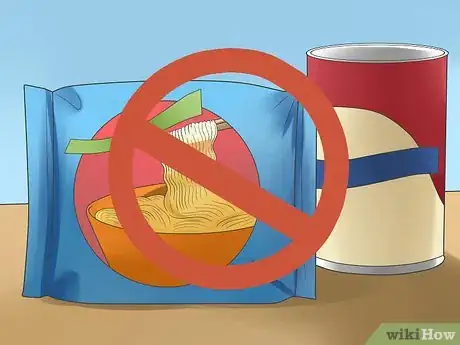
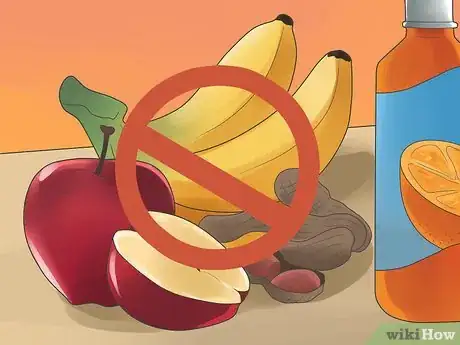








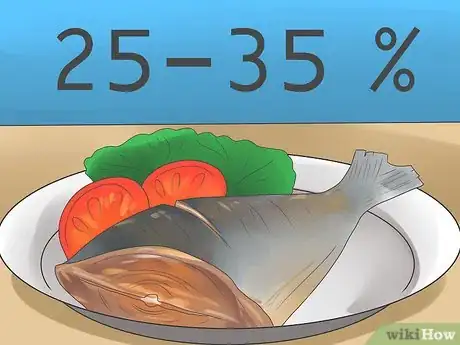


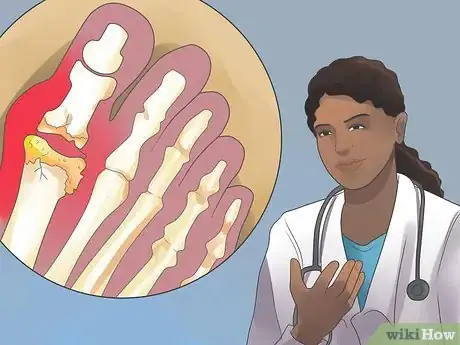
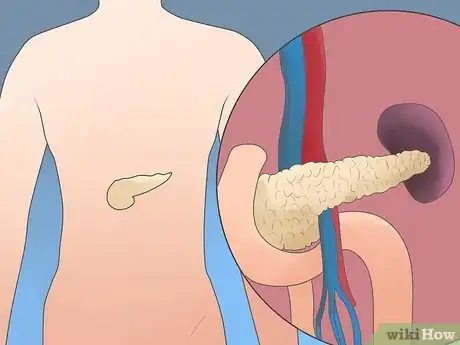
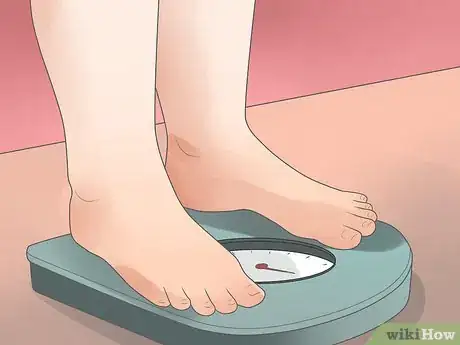






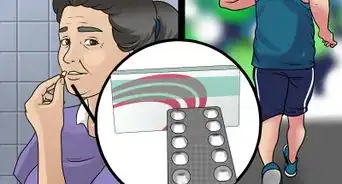

















































Medical Disclaimer
The content of this article is not intended to be a substitute for professional medical advice, examination, diagnosis, or treatment. You should always contact your doctor or other qualified healthcare professional before starting, changing, or stopping any kind of health treatment.
Read More...